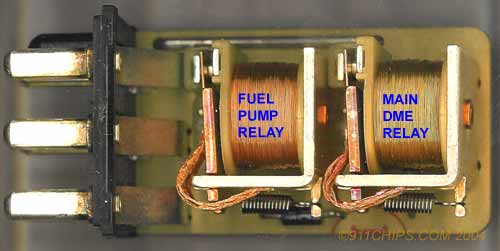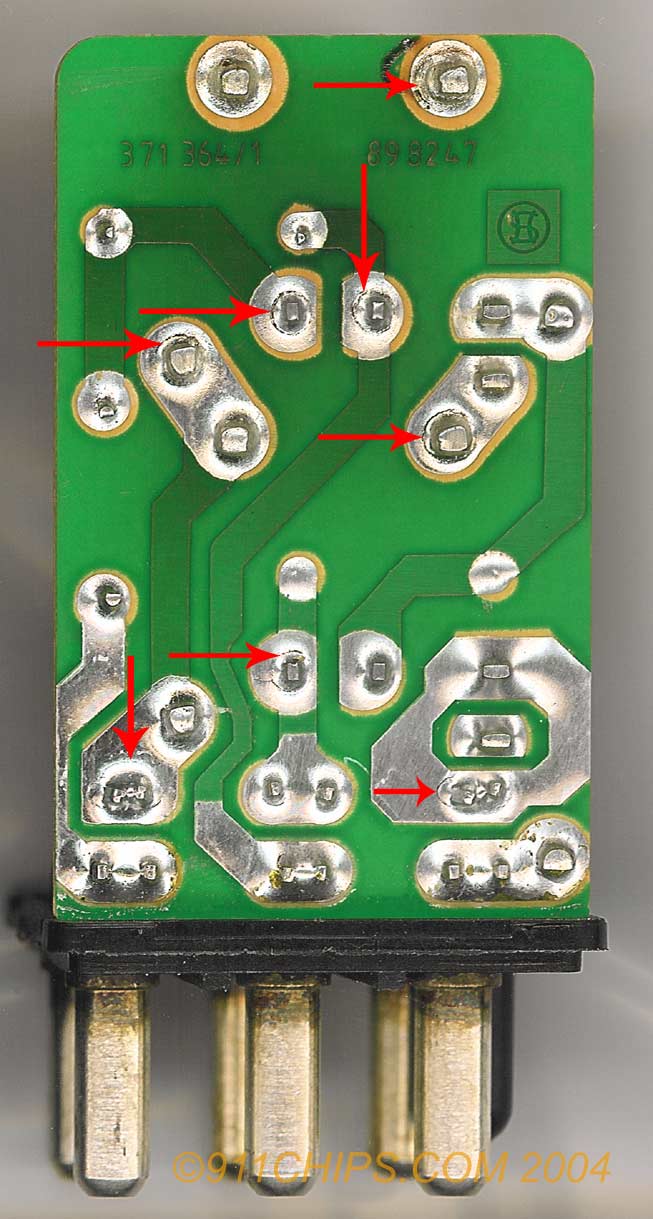Contained
within the relay are actually two relays which
operate in sequence of the other. When starting
the car, power is supplied to the main DME relay,
powering the DME computer. As long as the DME
sees the engine turning a minimum of 200 rpms,
it switches on the fuel pump relay, powering the
fuel pump and allowing the car to start and run.
This is designed as a saftey precaution, shutting
off the fuel pump in the event of an accident
where the fuel system ruptured. Pictured below
is the interior of a failing DME relay. This relay,
installed as a replacement six years ago, has
already begun failing. Note the heat induced discoloration
of the red enamel wire coating of the main DME
coil compared to those of the fuel pump. Shown
in it's actual position mounted on the car's floorboard,
note the horizontal mounting position of the heavy
copper relays onto the vertically positioned circuit
board. Heat, along with the vibration and shock
that the heavy relays place on the support joints
all contribute to solder joint failure.

DME
Relay - Cracked Solder Joints
Examining
the back of the board, we can see that most of
the failed joints are due to overheated solder
joints. In addition, we can see a minimum amount
of solder at each joint, most likely for production
cost savings. This leaves less material for heat
dissapation and structural strength. A few are
on their way to complete separation, while most
are completely separated. Vibration, movement,
and heat from thermal cycling all cause intermittent
contact, resulting in sporadic instances of start
and no start conditions. The simplest solution
is to always carry a spare, resoldering and reflowing
the joints in your old or new one with an adequate
amount of solder, two to three times the original
volume, providing better heat dissipation and
virtually eliminating the likelihood of future
failure. Click image for a closer view.

